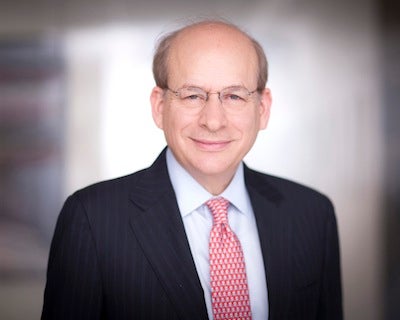
Educating for a World of Change
By David W. Leebron

Spring 2017
AS A LIFELONG TRAVELER to countries around the world, I often provide students with the following advice: “Travel as soon as you have the time and money, because two things happen. The world changes, and you change.” Today, the borders and constructs (e.g., “Iron Curtain”) and even some countries that I confronted as a teenager traveling around Europe in the 1970s no longer exist. The China I explored in early the 1980s, where everyone wore a tunic in one of two colors, has little resemblance to the bustling China of today. And although the barns I slept in during a trek in the Himalayas in 1980 may be little changed, my willingness to sleep in such places has.
Of course, this observation about change is not limited to travel. When it comes to technology and means of communicating, for example, the world has experienced a revolution in the last 15 years. The employment opportunities of today little resemble those that our graduates faced at the beginning of this century. And yet many of those midcareer graduates are now turning to those new opportunities. Some, as they change and as the world also changes, develop new passions and seek to match their professional lives with those passions.
In this issue, we explore a few of those stories. Oren Hayon ’94 majored in English at Rice and went to Hollywood to be a writer and producer. But ultimately his passions evolved; he became interested in religion and studied to become rabbi. Now, as the chief rabbi of Congregation Emanu El, he finds himself just across the street from Rice, where his fascination with delving deeply into words and their meaning began.
MJ Kwan ’10 studied architecture at Rice and then moved to Beijing, where she was engaged with large-scale modern projects. But ultimately she was moved by her passion for music toward an old profession: that of luthier, a crafter of violins.
Ariana Myers, who graduated from Rice in 1992, started out studying engineering but ended up a linguistics major. With that degree, she wound up working in finance in London, went to business school, worked in commercial real estate finance, climbed mountains and then started a business in home health care.
What all of these Rice grads have in common, and in common with so many others, is that Rice was only the beginning of their explorations of the world and its possibilities, and of themselves and their passions. We’re told that in the midst of all the changes in our world, today’s graduates will have seven careers over their lifetime. I’m not sure that’s true, but it’s very likely to be more than one or two.
How do we prepare our students for that? We do it by developing their intellectual curiosity and breadth. We expose them to new things that might develop into their passions. We instill the capability for deep and critical thinking. We train them to bring perspectives and insights not only from within their discipline, but from other areas as well. These are some of the core aspirations underlying a liberal arts education. Our students must be able to draw broadly from different aspects of human knowledge and experience if they are going to be able to confront this world of change.
And that brings me to the importance of art — on our campus and in our education. I confess I have a bias here. As an undergraduate, I studied the history of chemistry, and in particular its evolution in the latter part of the 19th century. It was during that time that scientists developed a three-dimensional understanding of the arrangement of atoms within molecules. That required a lot of creative thinking and imagination, and scientists drew on shapes and patterns that sometimes had more in common with artistic thinking. Even our own discovery of the structure of carbon 60 relied on drawing a connection between the artistic and architectural conceptions of Buckminster Fuller — think of the geodesic dome —and the possibilities for chemical structure: hence, buckminsterfullerene.
The Moody Center for the Arts is intended to draw across the disciplines and provide opportunities both for students committed to the arts as their primary endeavor and those seeking new ways of understanding and portraying the world within the context of other disciplines. Here’s what John de Menil said on the subject of science and art in an interview with film director Roberto Rossellini:
“[I]t’s a common saying that science and art are two different worlds, but it just isn’t so, it isn’t true. Art thrives on great civilization and great civilizations are based on scientific accomplishment, on scientific supremacy. And the idea of an educated person that would know only about science or know only about art is just the wrong idea; you have to have both. And one supports the other.”
The building, which opened in February, itself represents boldness and change on our campus. That does not mean we have any less commitment to the coherent historic center of our campus and its traditional Mediterranean Byzantine design. The choice to make the Moody Center a bold building was deliberate, a symbol that we must bring new creativity and innovation to all we do, even while incorporating key elements of tradition. And while it is the responsibility of all of us to preserve the very best things about Rice, the things that make us distinctive, it is equally our responsibility to seek progress and innovation and inspire our students to embrace the world of change they will confront.
